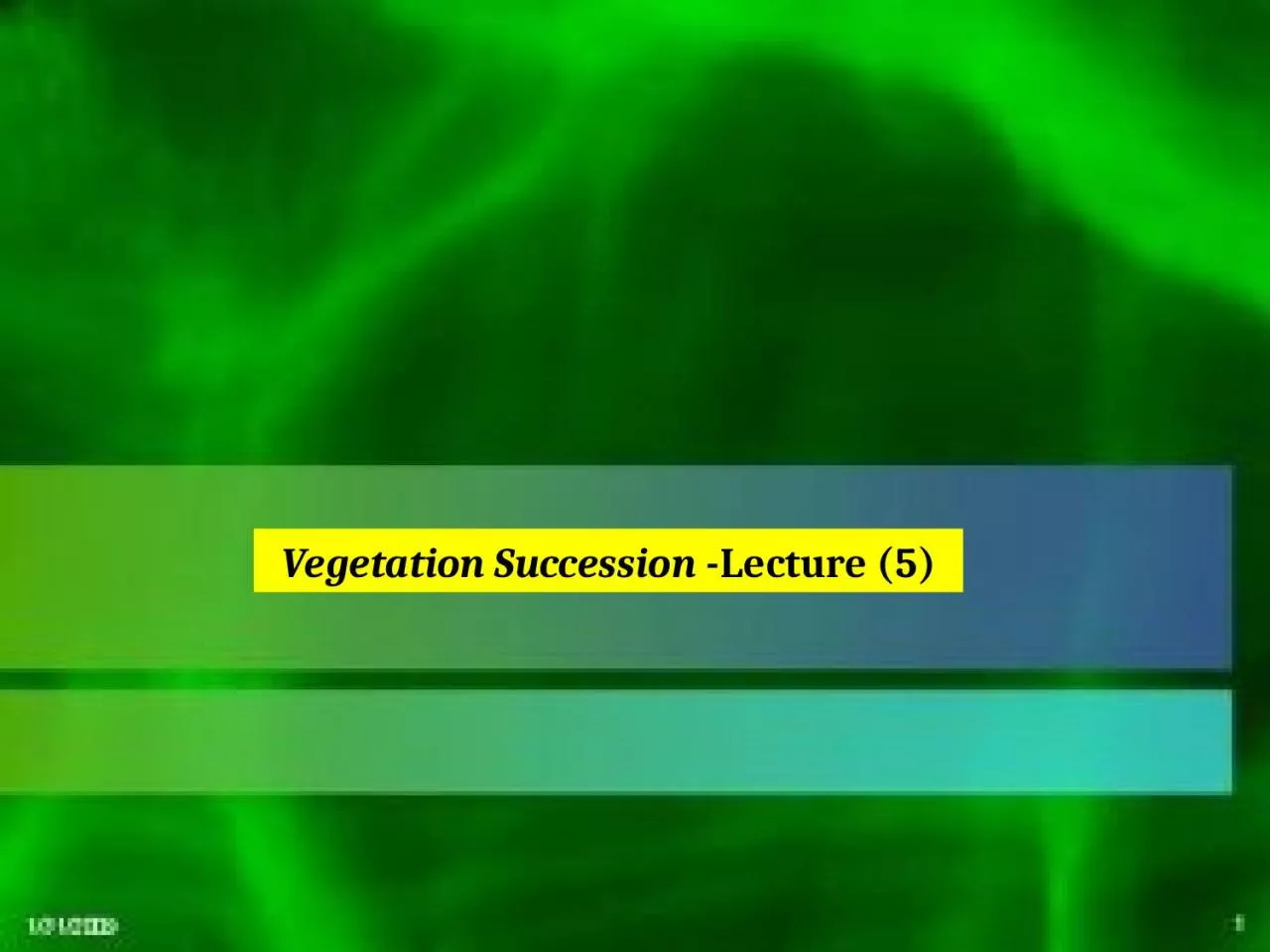

Vegetation Succession Process by which one community replaces another on a given site as a result of environmental changes 1 Vegetation is susceptible to changes 3 Vegetation of an area has a lifehistory just like an individual plant or animal It is born growth and maturation ID: 1015957
Download Presentation The PPT/PDF document "Vegetation Succession -Lecture (5)" is the property of its rightful owner. Permission is granted to download and print the materials on this web site for personal, non-commercial use only, and to display it on your personal computer provided you do not modify the materials and that you retain all copyright notices contained in the materials. By downloading content from our website, you accept the terms of this agreement.
1. Vegetation Succession -Lecture (5)
2. Vegetation SuccessionProcess by which one community replaces another on a given site, as a result of environmental changes.
3. 1- Vegetation is susceptible to changes3- Vegetation of an area has a life-history just like an individual plant or animal. It is born, growth and maturation.4- Succession process needs long time. 2- Environmental changes will result in minor or major changes in the associated vegetationFactors initiating Succession
4. The stages in the process of succession are called seral communities. *Succession beginning in hydric (water) habitats (e.g. pond, swamp etc.) is called Hydrarch and the different stages of development constitute Hydrosere. *Succession beginning in a dry habitat is called Xerarch and the different stages of development constitute Xerosere. Xerosere which begins on bare rock is called Lithosere while that beginning on sand is termed Psammosere.
5. Types of Succession1. Primary succession: It is the establishment of plants on land that has not been previously vegetated. 2. Secondary succession: It is the invasion of a habitat by plants on land that was previously vegetated. (Removal of past vegetation may be caused by natural or human disturbances such as fire, logging, cultivation).3. Allogenic succession: It is caused by a change in environmental conditions which in turn influences the composition of the plant community.
6. 1. Submerged stage2. Floating stage3. Reed Swamp Stage4. Sedge - Meadow Stage5. Woodland Stage6.Climax ForestStages of Hydrosere succession e.g. Salix, Populouse.g. Salixe.g. Juncus, Carex, Cyperus e.g. Typha, & Phragmitese.g. Eichhornia, Pistia, Lemna, Wolfia & Spirodela e.g. Elodea, Potamogeton,Ceratophyllum and Najas
7. Hydrosere Succession Submerged stageFree floating St.Reed swamp St.Sedge meadow St.WoodlandSt.Climax St.
8. 1-Submerged sp.2- Free floating sp.3-Reed swamp stage:
9. 5. Woodland stage6. Climax forest4. Sedge meadow stage Stages of Hydrosere succession
10. Stages of hydrosere
11. Stages of Xerosere succession
12. 1. Crustose lichen3. Moss2. Foliose lichen
13. 5. Shrub6. Climax forest4. HerbaceousStages of Xerosere succession
14. From the above described succession cycles (hydrosere & xerosere), we may conclude that succession leads to more favourable conditions. The limiting factor is the climate and the type of climax stage is in harmony with it.Thus xeric habitats become less dry and hydric habitats become drier by plant reaction as succession progress. Conclusions The vegetation at first adapted to xeric or hydric conditions has developed into a mesophytic conditions.
15. Hydric HabitatsXeric HabitatsMesic Habitats ReactionShading More drier habitat(- water& + temp)Evapo-transpirationLess drier habitat(+ water& - temp)